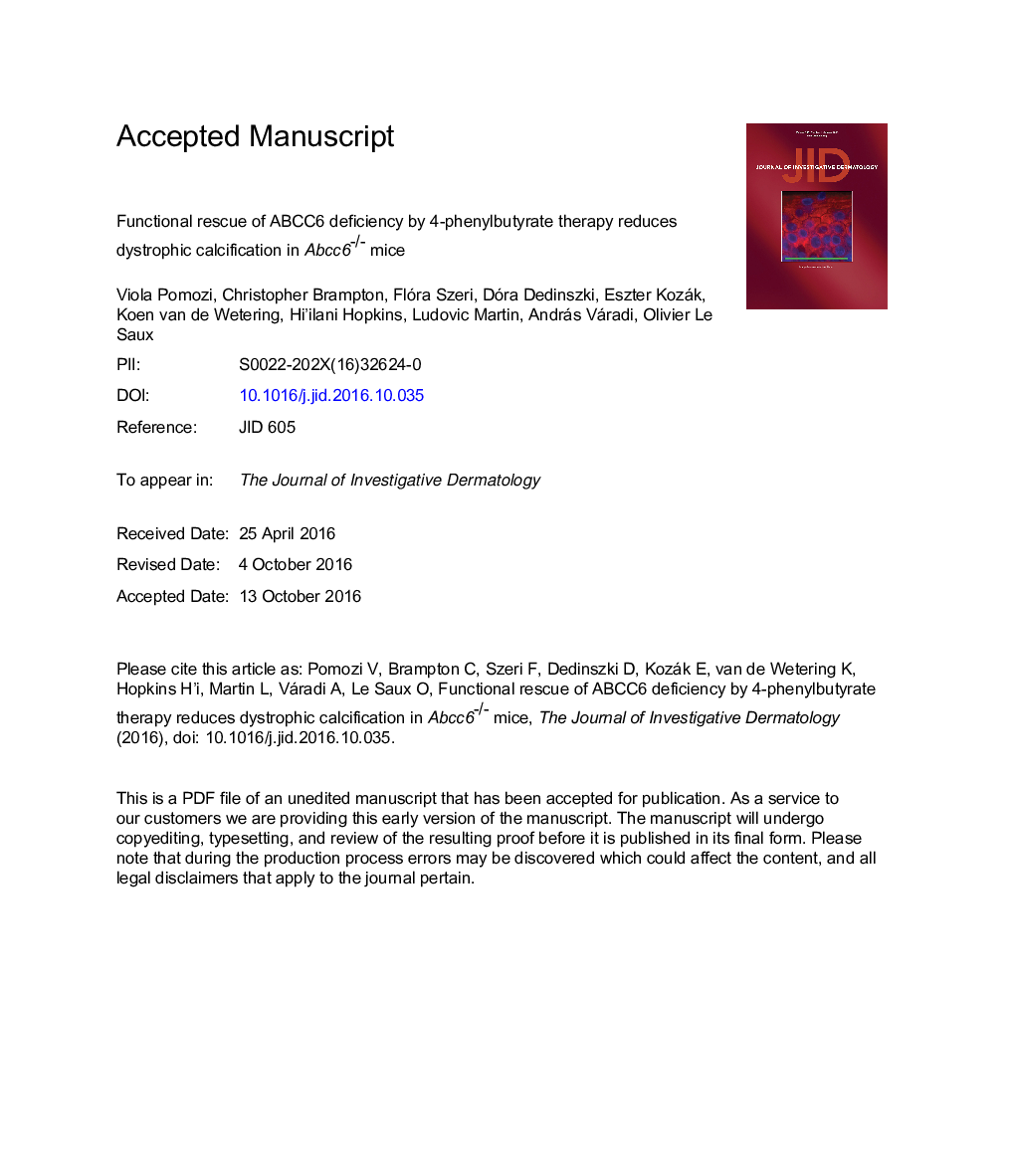| Article ID | Journal | Published Year | Pages | File Type |
|---|---|---|---|---|
| 5649734 | Journal of Investigative Dermatology | 2017 | 31 Pages |
Abstract
Soft-tissue calcification is associated with aging, common conditions such as diabetes or hypercholesterolemia, and with certain genetic disorders. ABCC6 is an efflux transporter primarily expressed in liver facilitating the release of adenosine triphosphate from hepatocytes. Within the liver vasculature, adenosine triphosphate is converted into pyrophosphate, a major inhibitor of ectopic calcification. ABCC6 mutations thus lead to reduced plasma pyrophosphate levels, resulting in the calcification disorder pseudoxanthoma elasticum and some cases of generalized arterial calcification of infancy. Most mutations in ABCC6 are missense, and many preserve transport activity but are retained intracellularly. We have previously shown that the chemical chaperone 4-phenylbutyrate (4-PBA) promotes the maturation of ABCC6 mutants to the plasma membrane. In a humanized mouse model of pseudoxanthoma elasticum, we investigated whether 4-PBA treatments could rescue the calcification inhibition potential of selected ABCC6 mutants. We used the dystrophic cardiac calcification phenotype of Abcc6-/- mice as an indicator of ABCC6 function to quantify the effect of 4-PBA on human ABCC6 mutants transiently expressed in the liver. We showed that 4-PBA administrations restored the physiological function of ABCC6 mutants, resulting in enhanced calcification inhibition. This study identifies 4-PBA treatment as a promising strategy for allele-specific therapy of ABCC6-associated calcification disorders.
Keywords
Related Topics
Health Sciences
Medicine and Dentistry
Dermatology
Authors
Viola Pomozi, Christopher Brampton, Flóra Szeri, Dóra Dedinszki, Eszter Kozák, Koen van de Wetering, Hi'ilani Hopkins, Ludovic Martin, András Váradi, Olivier Le Saux,
